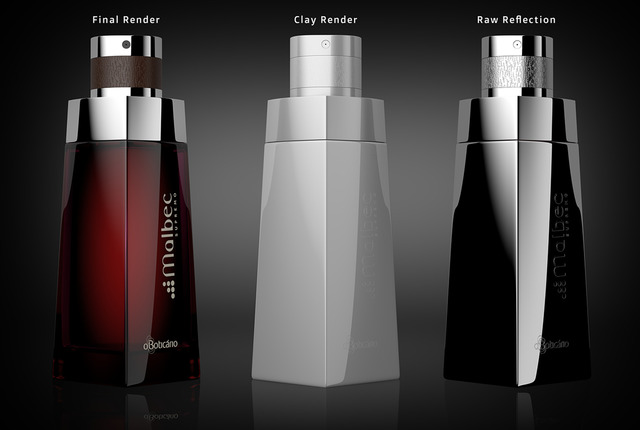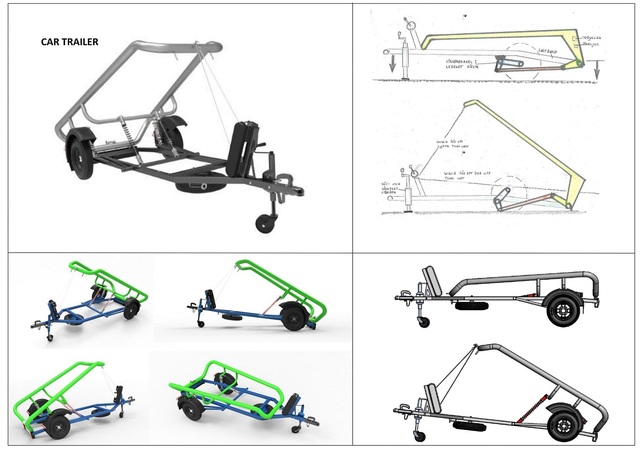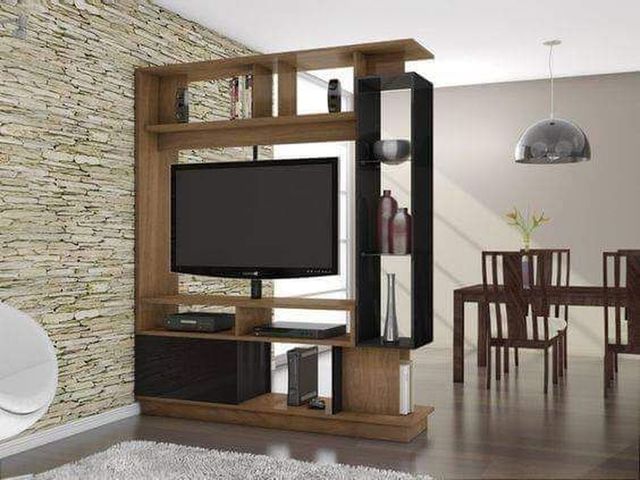A few decades ago, photographers would never have dreamed of being all but replaced in multiple industries. However, that’s precisely what has happened, and more businesses are making use of these 3D product renders every day.
3D rendering freelancers and engineers in industries across the board are now capable of depicting their creations as they would look in the real world before any physical work takes place. The tools we’ll be discussing here are 3D rendering and 3D visualization.
This technology is already widely utilized, and the number of companies taking advantage of it continues to climb rapidly. So, which industries are making the most of this technology? What precisely are they doing with it?
You’re sure to have seen it with your own eyes already, but you may not have known it. We’ll cover the ways that 3D product rendering and visualization are being utilized in just a few moments, but first, let’s start with what it is.
 Table of Contents
Table of Contents
- What is 3D product rendering?
- Types of 3D renderings and visualizations
- Benefits of 3D product visualization
- Industries using 3D rendering and what they’re doing
- Quick tips for 3D product rendering projects
- 3D rendering and visualization in consumer product design firms
- Ready to start your 3D product rendering project?
What is 3D product rendering?
For this discussion, the terms 3D rendering and 3D visualization will be used interchangeably. If you aren’t familiar with exactly what a 3D rendering or visualization is, it can be defined as a computer-generated image of an object.
RELATED: 27 ways digital product rendering can help furniture manufacturers with marketing
While what each project calls for can vary, 3D renderings are often just as detailed as the physical objects they represent. They can also look realistic enough to be mistaken for a professional photograph of an object in many cases.
Types of 3D renderings and visualizations

Many different types of 3D renderings can be created. Some types are specialized for use in a specific industry or application. Perhaps one of the most straightforward examples to illustrate this point are 3D furniture renderings. This type of clip or image is used to show the product in the kind of environment it would fit best in while depicting what the owner may be doing.
For the most part, renderings can be divided into clips and still images. Clips and animations show the product in motion, while still images are basically the equivalent of computer-generated photographs.
Clips and still images are widely utilized. Both types of visualizations can be found on e-commerce sites and many other locations. In many instances, these 3D renderings can provide potential customers with an even better perception of the product than what a photo could provide.
Some renderings even have built-in interactive features. For example, it’s common to create product renderings that allow the viewer to rotate the product around 360˚.
Benefits of 3D product visualization
Since businesses large and small are taking advantage of 3D product rendering services for a range of applications. It should come as no surprise that there are several benefits this technology offers in practically every scenario. Let’s take a close look at what those benefits are and how they stack up to the possible alternatives.

Cost
The market rates for 3D rendering may not appear to be a bargain at first glance. That is, if you’re just looking at numbers without an understanding of the project that the quote was for. If you compare similar projects, you’ll find that the vast majority of the time, 3D rendering offers significant savings over comparable options such as photography.
However, it’s important to note that there’s more to the subject of savings here than just the project price. As we’ll cover later, this technology is often used during various stages of the design process. Since it can be used in place of some other techniques that require physical labor and far more time, it can also bring substantial savings in this scenario.
Speed
3D visualizations can be created faster than professional photographs. A small rendering project may be completed by a skilled CAD designer over a few days or even less at times. Compare this to a photoshoot. A professional photoshoot can require several days to a week for just the actual time to take the photos.
Then you still have logistics concerns for products and staging items, equipment, lighting, etc. Once the shoot is done, the photos need to be edited, which can add several more weeks to the length of the project.
Like any other kind of illustrative work, larger 3D visualization projects take more time than smaller ones. That being said, 3D rendering work also has a speed advantage over other methods because of the role that 3D models play.
RELATED: Product rendering and 3D visualization – an overview
If you aren’t familiar with the exact process of creating a 3D rendering, it all begins with a 3D model of the object. Any additional objects in the rendering, such as background items, must also be represented by a 3D model.
On the surface, this seems like a lot of work. It can be, but each model can be used in as many renderings as you want. So, essentially, once a high-quality 3D model of the main object has been created, it can be placed in an infinite number of renderings.
Flexibility
The flexibility that 3D renderings and visualizations offer is multifaceted. For one thing, they offer the freedom to reuse models from other projects and renderings. This advantage was mentioned just above. This kind of reusability is among the most important qualities that make 3D rendering such an appealing and powerful tool.
The other aspect of the flexibility that 3D visualizations offer is about the kind of renderings that designers can create. We’ve already covered that both still and moving images can be created. However, the choices don’t end there. Within both of these categories, there are a large number of specialized types. Some of these are only used in specific industries, while others are used for the same purpose across many sectors.
Industries using 3D rendering and what they’re doing

While the specific applications of 3D rendering can vary by industry and by project, this technology has been adopted in a wide range of fields. Here, we’ll take a closer look at what some of these industries are using it for, as well as some purposes that are common across multiple industries.
Architectural 3D renderings
For architects, 3D visualization has become one of their primary tools for communicating with clients. While those in the industry are obviously very familiar with blueprints, 2D drawings, and floorplans, many clients are not skilled in interpreting these drawings. This is even truer when the client needs to imagine a few different options to determine which one they would prefer.
3D rendering has taken the guesswork out of this process. A high-quality rendering allows architects to show clients the structure precisely as it would appear. Scale, accuracy, and details are all exactly as they should be. The client can simply look at the rendering and provide feedback before moving on with the project. This saves plenty of time for everyone involved and also minimizes the risk of project funds going towards unwanted features during construction. Using 3D visualization benefits everyone involved in this scenario.
Automotive 3D visualizations

High-quality 3D renderings are used for numerous purposes in the automotive design industry. It’s a must-have during the prototyping process, but it serves some other crucial functions as well. For example, in the automotive industry, one of the most important uses for 3D product renderings is in advertising and marketing materials.
Let’s say that a major manufacturer is already set on producing a new model. The appearance and exterior features of that model have already been finalized. At this point, rather than waiting for the first prototypes or an early production model, 3D renderings can be used to start making marketing materials.
Many potential customers who see these advertisements won’t even realize that the image is a rendering. As long as that rendering accurately represents the product, and it should if it was made by a skilled designer, there shouldn’t be any complaints about the lack of photographs.
3D furniture product renderings
There are an incredible number of 3D renderings created for the furniture industry each year. As you may imagine, there is plenty of design and prototyping work here. While there are a vast number of renderings and visualizations created for those purposes, there may be an even larger number created for marketing furniture.
With the current state of e-commerce and its role in the furniture industry, it should come as no surprise that most of these renderings are being used online. Some are used for marketing materials, of course, but the real emphasis is on presenting the product in the best possible way on an e-commerce page.
With some of the interactive functions that can be built into 3D renderings, potential customers can get an even better look at the product than what they might get on the showroom floor. This also gives manufacturers and retailers the chance to show 3D animations demonstrating how simple assembly can be.
3D rendering for electronics

The use of 3D rendering in the electronics industry is very widespread as well. It is often utilized to create a range of concepts or prototypes before physical models are made.
3D renderings can be created with such speed and accuracy while allowing for full creative freedom that they are an outstanding tool for showing different design styles or iterations. Visualizations for this purpose are mainly for in-house use, although a few may be used for tradeshows and expos.
Like in the automotive and furniture industries, there are plenty of 3D electronics renderings created for marketing and advertising. Lifestyle type images are a popular choice for showcasing products and the settings that they fit into.
Design and prototyping
3D renderings are being used for the design and rapid prototyping process in nearly any industry you can think of today. Compared to other methods of illustration and representation, 3D rendering is so far superior in terms of speed, flexibility, and accuracy that it doesn’t make sense to use something else.
Just as there are many stages in the design and prototyping processes, there are many times that 3D visualizations may be used during the project rather than just on a single occasion. For instance, renderings may be created during the concept stage, or to display multiple creative options, or to showcase the final design.
Advertising and marketing

The flexibility offered by the various types of 3D product renderings really shines when it comes to marketing and advertising. With still images, interactive images, and animations all well within the realm of possibility, it’s easy to see why. It’s not uncommon for all these types to be utilized for a single product, especially if it’s going to be distributed by online retailers. While product presentation is always of critical importance, it could easily be argued that it’s even more important online.
Utilizing 3D renderings of products also allows for pre-sales. Why wait for production to be in full swing to start generating interest when you could do it before production begins?
Quick tips for 3D product rendering projects
If you haven’t taken advantage of these tools before, then it’s completely normal to need a little direction as far as the best means and methods for your situation. That being said, here are some general tips that can be applied to nearly any product.
Check out the competition
If you really aren’t sure of anything other than the realization that 3D product renderings could benefit your business, then it’s best to take a look at what your competition is doing. If they are already utilizing 3D renderings, what kinds are they using? Where are they displaying them? Are most of them showing up on product pages, or are they being used for advertisements?
Work with an experienced designer
Everyone wants to get excellent talent onboard for rendering projects, but if you’re still new to this, then getting someone with experience is even more critical. If you can find an experienced designer to work with for the project, you’ll be able to take advantage of their knowledge. The chances are that they’ve worked on similar projects before and have some helpful tips of their own to offer if you’re willing to listen.
Opt for realism
A 3D rendering can show anything you can think of. It’s only limited by your imagination and the skill level of the designer. Many product renderings show the object in a realistic setting, but some want their product depicted in more of a fantasy setting. For the sake of creating the most accurate representation as possible, it’s best to show the product in a realistic environment.
3D rendering and visualization in consumer product design firms

With all of the possibilities that they offer, 3D rendering and visualization have become tools of the trade for consumer product design firms. For one thing, renderings can be used to gauge interest in concepts and product ideas before any work is put into a physical prototype.
This is a significant advantage for these firms to offer their clients. Why spend money developing a product with an uncertain level of interest, when several realistic depictions can be used to get real feedback and see which one has the best chance of success?
The same concept applies when dealing directly with the client. They can see exactly what the product would look like without trying to imagine it for themselves while looking at 2D drawings.
When you also consider that realistic 3D product renderings can be created quickly and modified without too much difficulty, it’s easy to see why consumer product design firms have come to rely on this technology.
Ready to start your 3D product rendering project?
When it’s time to start looking for talent for your 3D visualization project, it can be overwhelming. Many firms offer these services, as well as plenty of independent designers and engineers.
However, instead of trying to sort through all of these options yourself, there is a better way. You can utilize the vetted talent here at Cad Crowd. The independent designers and engineers here are proven and vetted. You can get a quote and work with them confidentially.
There are also standard procedures in place to protect the privacy of your design and the rights to your intellectual property. When you work with a Cad Crowd designer for your 3D product rendering project, you’ll be protected with a non-disclosure agreement (NDA). It’s also standard for all intellectual property rights to remain with you.
We’ve taken the hassle out of finding the right designer or engineer for your project. If you’re ready to get things moving, start by getting a quote today.
